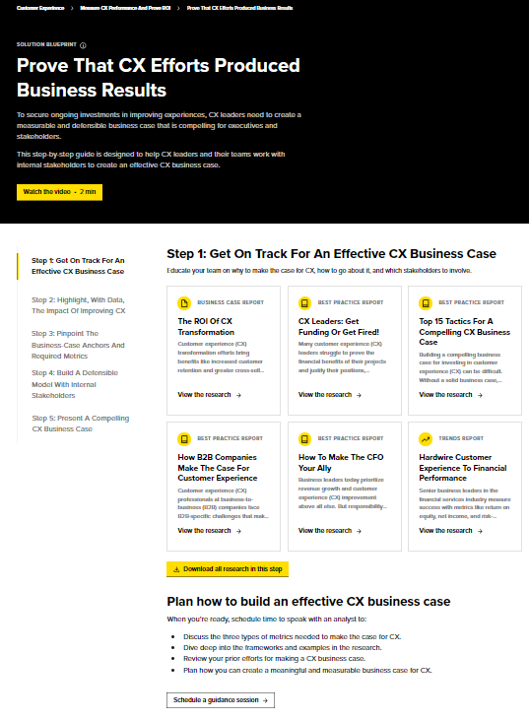Each year, we calculate the business impact of improving in Forrester’s Customer Experience Index (CX Index™) by one point. For 2023, we published the results in the report, How Customer Experience Drives Business Growth, 2023. The report includes the dollar upside of improving CX Index by one point for 12 industries: airlines, luxury auto manufacturers, mass-market auto manufacturers, auto/home insurers, multichannel banks, direct banks, credit card issuers, health insurers, midscale hotels, upscale hotels, investment firms, and retailers.
A Sneak Peek Into The Results
- The benefits of improving CX can be massive. For example, for a mass-market auto manufacturer, improving CX by one point can lead to more than $1 billion in additional revenue — this is because improving CX increases the chance that customers will buy their next car from the same brand and take the car to the brand’s dealership for service needs. For an auto/home insurer, it’s close to $370 million.
- In many industries, the upside of making a happy customer even happier is higher than that of placating an unhappy customer. This is because the growth benefits of improving CX increase exponentially when going from “good” to “excellent” for those industries, which include some financial services industries. CX pros in firms where this relationship holds true must focus on identifying CX drivers that move customers from “OK” and “good” CX scores to “excellent” scores.
- The effect of recommendations on the business upside of CX is small. For each of the industries in our analysis, acquiring new customers via recommendations accounts for less than 7% of the overall business benefit from improved CX.
Calculate These Numbers For Your Own Firm
Should you use our numbers to communicate the value of CX in your firm? Yes and no. Use them to get initial buy-in that CX drives business results. But don’t just assume that your numbers will look the same. Instead, calculate the business upside of CX for your own firm. Here is how we calculated it — hopefully, you will find this useful:
1. Calculate what each customer is worth, depending on how loyal they plan to be.
Our CX Index survey measures the quality of customers’ experiences and their loyalty intentions. Together with other data, we calculate a revenue potential for each customer. How we calculate it depends on how companies in each industry make money.
2. Create models that link CX Index and revenue potential.
Our analysis shows, for each industry, the effect of CX changes on business outcomes. We also found out whether that effect changes based on whether we go from a low CX Index score to a medium one or from a medium one to a high one.
3. Calculate the upside of improving CX by one point.
Our model shows the impact on a customer’s revenue potential when the CX Index score of the industry rises by one point. We then multiplied that per-customer upside by the number of customers of a big brand in the industry. (We focused on the largest brands in the CX Index in each industry, as a few big brands dominate each industry that we investigate.)
Forrester Clients: Use Our Five-Step Solution Blueprint
The image below shows step one. Click Prove That CX Efforts Produced Business Results for all details.

Thank you for your major contribution to this research, James Williams!







